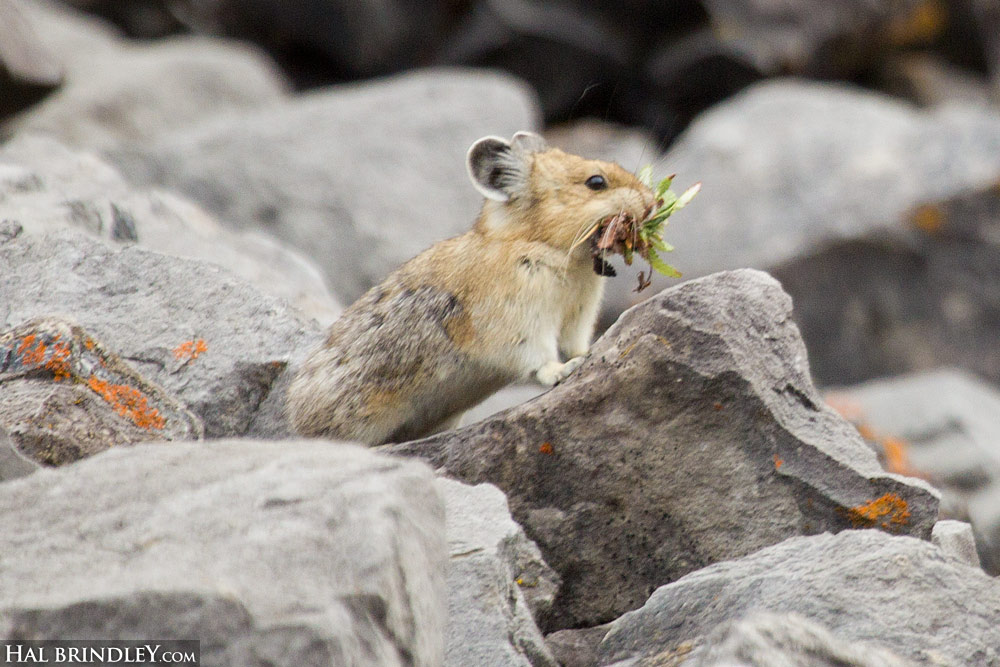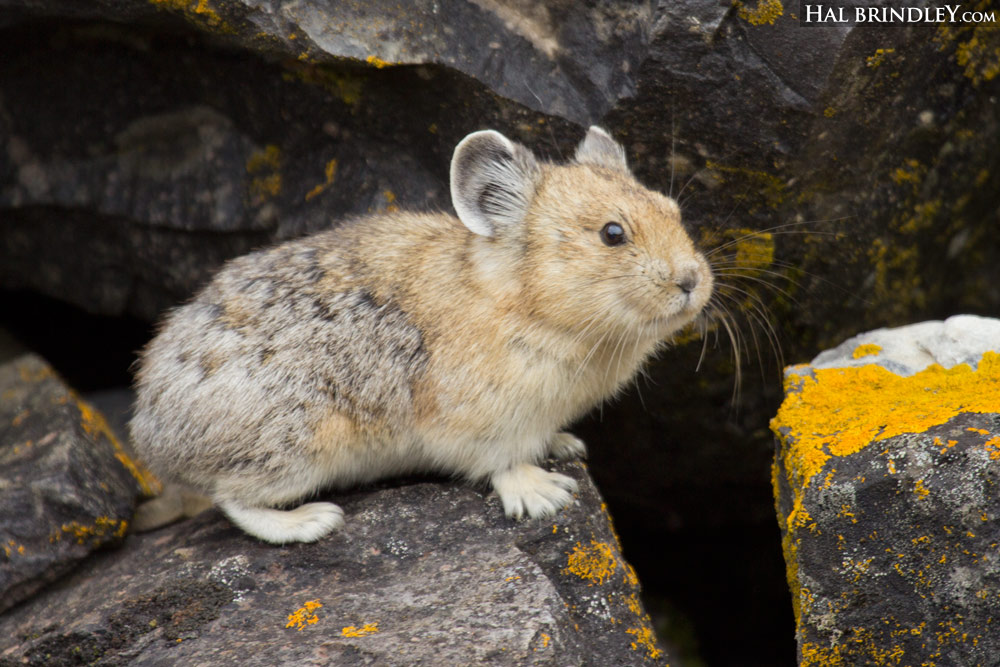American Pika
(Ochotona princeps)
Meet the furry farmer. American Pika’s spend up to a third of of their active time making hay! Scampering from their rocky dens, they harvest nearby plants and carry them back to the entrance and dry them in the sun. Then they store huge piles of the dried vegetation inside their dens and feed on it all winter! Pikas have a habit of harvesting far more plants than they end up eating, so it is common to see middens of old grass piles in Pika habitat.

Pikas are not rodents. They belong to the same group as rabbits and hares: the Lagomorphs. What sets lagomorphs apart? Like rodents they have a pair of upper incisors that grow throughout their life, but there is a second pair of smaller teeth directly behind them! Secondly, lagomorphs eat their poop (known as coprophagy)! This allows them to extract more nutrients from their food on the second pass. Third, and possibly the strangest, is their genital arrangement. The males scrotum is actually in front of the penis instead of behind! They are the only mammals besides marsupials with this setup!

The name Pika comes from Siberia where locals named it after the sound of their high-pitched call. So it was pronounced peeeka until it got Americanized and is now generally pronounced Pie-kuh here. One of my favorite pastimes while traveling around the mountains of the western U.S. and Canada is to stop next to a bouldery slope and listen for that adorable call of the American Pika, “EEEEEEP!”
I photographed the first pika at Frank Slide in Crowsnest Pass, Alberta, Canada, which was dubbed “Canada’s deadliest rock slide!” on the nearby signs.
